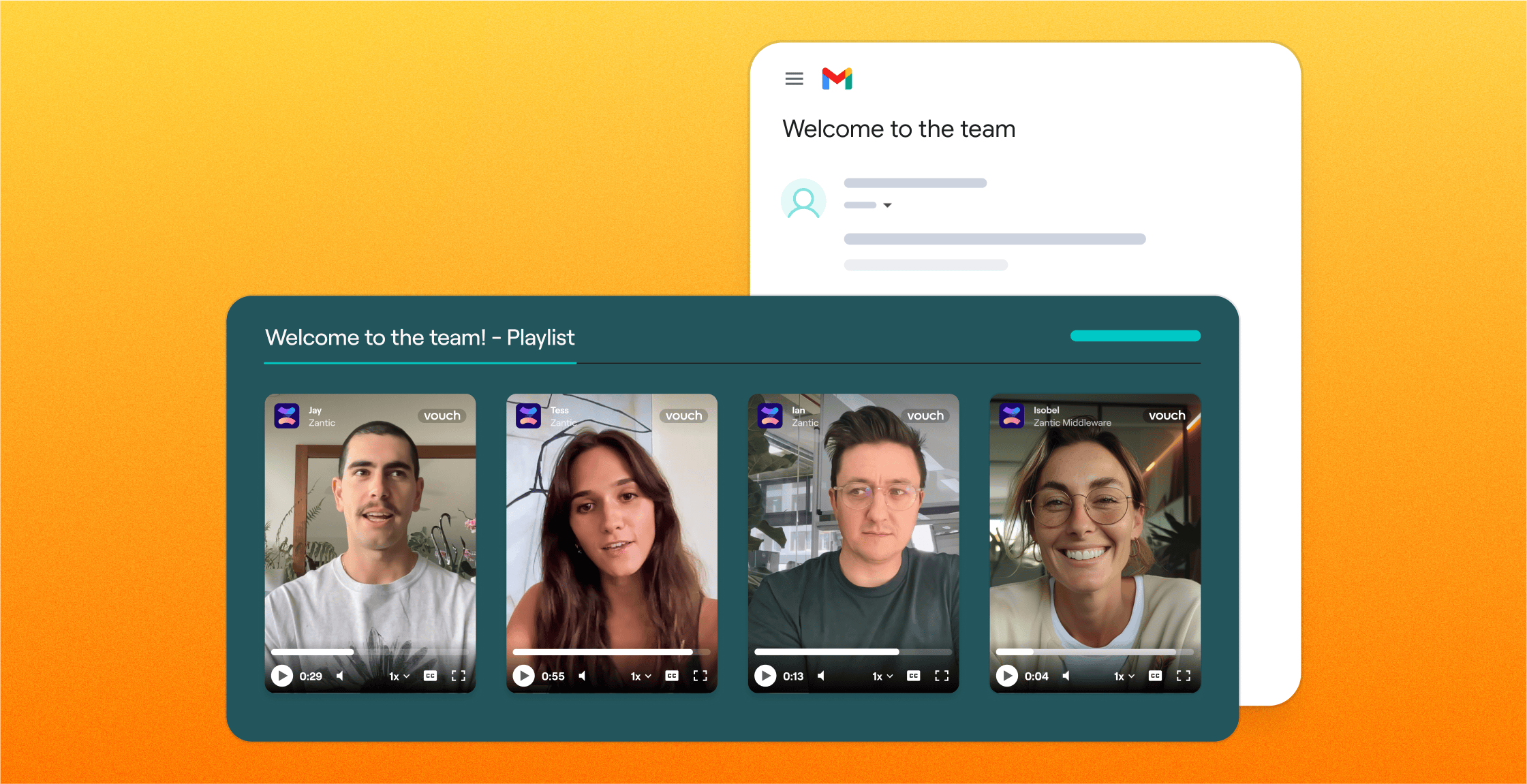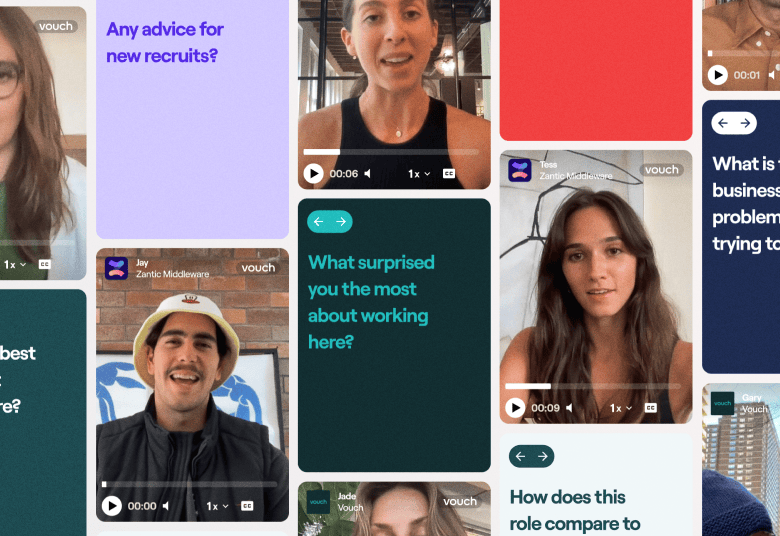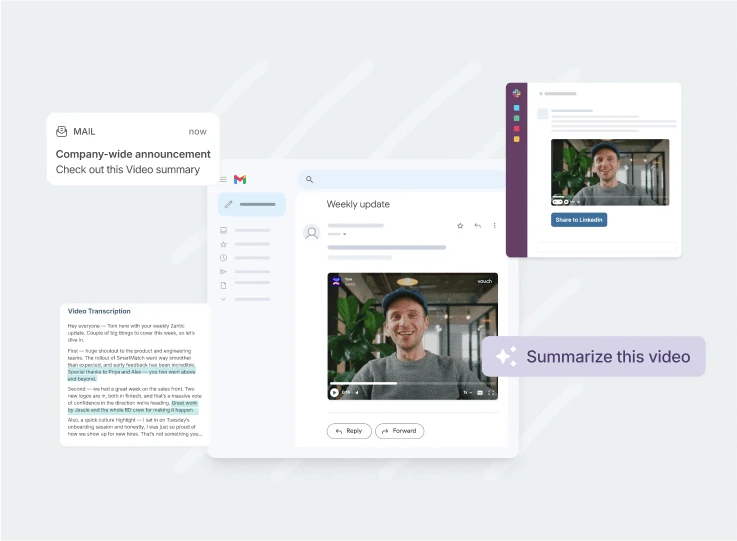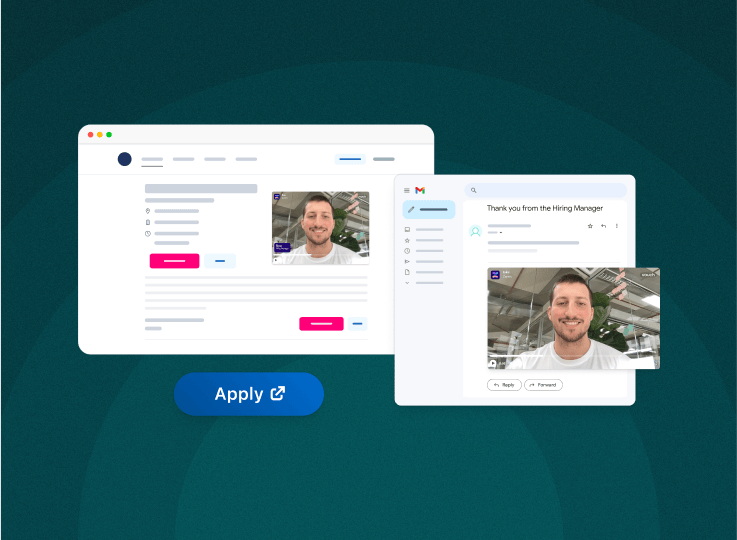Onboarding is a word that gets used a lot in HR circles, but what does it really mean?
At its core, onboarding is the process of integrating new employees into a company and preparing them for success in their roles.
This includes everything from filling out hire paperwork to learning company policies through tools like video, understanding the social fabric of the organization, and mastering the daily tasks they'll be responsible for.
Sounds straightforward? But in reality, onboarding is a complex and multi-faceted process that can vary significantly between organizations.
Let's dive in.
Why Does Your Onboarding Process Matter?
An efficient onboarding experience is crucial because it lays the foundation for the employee-employer relationship, building solid team relationships and your company culture.
A successful onboarding process is the key to employee engagement, which in turn drives productivity and retention. According to a 2024 report from Bamboo HR, organizations with a formal onboarding program experience 50% higher employee retention rates and 62% higher productivity among new hires.
Onboarding isn't just a one-time event either - it's an ongoing process that can last several months.
The goal is to provide a seamless employee onboarding experience that not only covers administrative tasks but also integrates employees into the company's culture and team dynamics.
The AI-enabled workspace for talent teams.
- Unified workspace for talent teams
- Accelerate hiring with AI tools
- Auto-generate polished hiring and employer brand content
- Easily repurpose assets across all channel
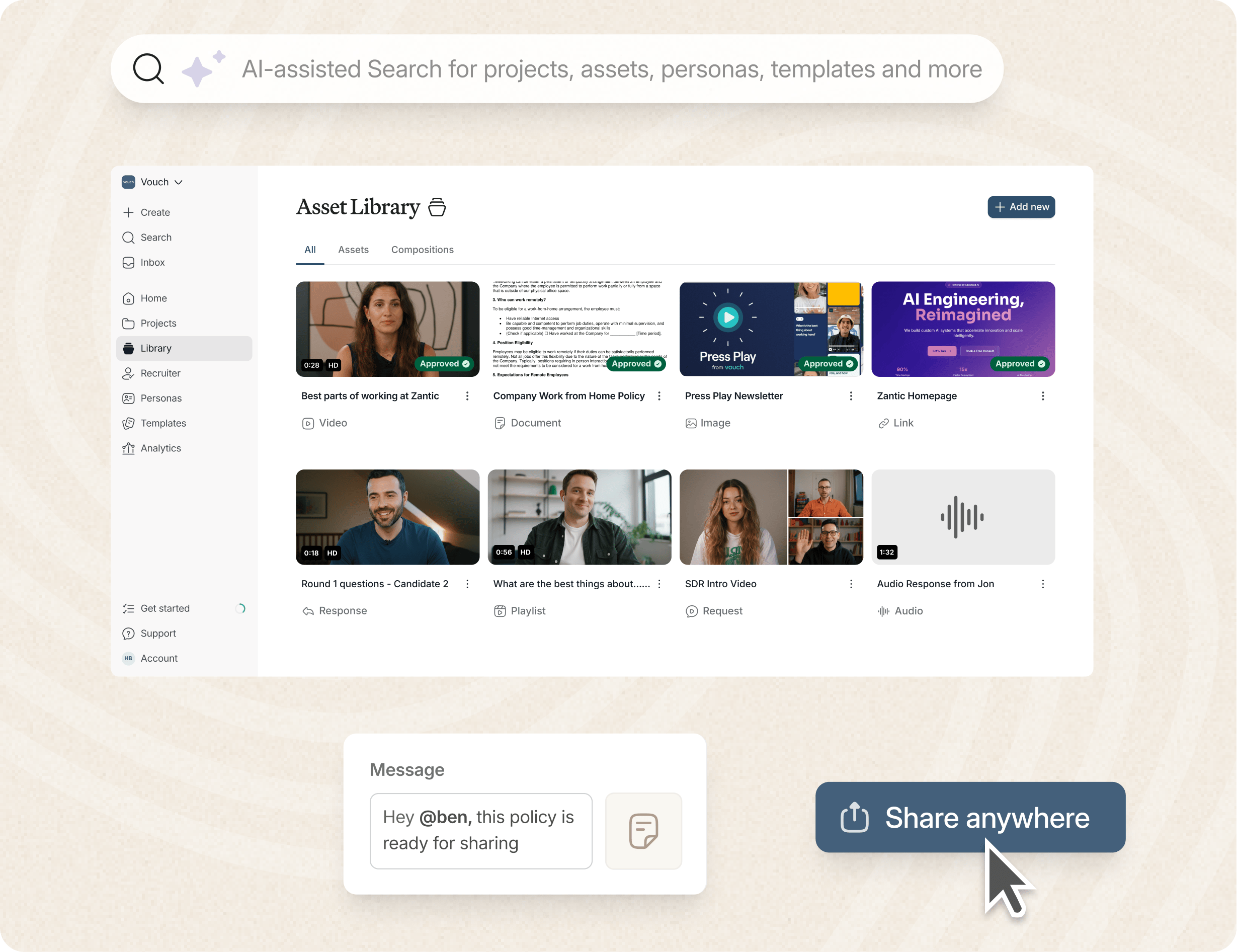
Step-By-Step: Breaking Down the Onboarding Process
Let's walk through the phases of onboarding that contribute to a superior onboarding experience for your new employees.
1. Pre-boarding: Time Between Contract Signing and First Day
The onboarding process begins even before the new hire steps through the door. Pre-boarding includes the completion of paperwork, such as tax forms, benefits paperwork, and other administrative activities. This phase is crucial because it sets the tone for the broader onboarding experience.
Pre-boarding is also an excellent time to introduce new hires to the company values, culture, your team's missions, share your employee handbook and any other basic training materials they might need. This helps to create a comfortable, happy working environment from day one.
2. Initial Orientation: Setting Expectations
On the first day, new hires typically go through an initial orientation where they're introduced to the company's culture, team members, and their specific roles. This phase often includes an introduction to policies and a breakdown of tasks they'll be handling.
An effective onboarding strategy will also involve team introductions and team-building exercises. These activities help new hires feel connected to their colleagues, contributing to a positive engagement.
3. Role-Specific Training: Mastering the Job
After the initial orientation, new hires enter a phase of onboarding where the focus shifts to their specific roles. This could involve essential job responsibilities, role clarity, and detailed training sessions on the tasks they'll be performing daily.
Position-specific training and team training are essential components of this phase. Remote onboarding scenarios might include digital forms and virtual training sessions, which are increasingly common in today's dynamic enterprise organizations.
4. Cultural Integration: Understanding the Social Fabric
Cultural training is another crucial part of a successful onboarding process. New hires need to understand not just what their job entails - but also how it fits into the broader organizational culture.
This is where the development of networks comes into play. Helping new hires build relationships within the company is crucial to their long-term success. According to a 2024 Gartner conference report, 85% of organizations with strong network-building programs report higher levels of employee engagement and satisfaction.
5. Continuous Learning: The Ongoing Process
Onboarding doesn't end after a few weeks or even months. Continuous learning and microlearning strategies are an essential part of an effective employee onboarding plan.
Continuous learning involve ongoing training sessions, regular check-ins with a direct manager, or access to employee onboarding tools like onboarding portals.
The investment in continuous onboarding ensures that employees not only master their roles - but also continue to grow within the company, setting the stage for long-term success.
What Are The Best Practices for Successful Onboarding?
Want to ensure your onboarding process is up to par? Here are some tips:
- Use an Onboarding Checklist: An airtight onboarding checklist can help ensure nothing is overlooked. Include everything from hire paperwork to team introductions.
- Leverage Technology: Employee onboarding software solutions like Vouch Video can streamline administrative tasks and provide a consistent onboarding program across your organization.
- Focus on Culture: Culture training and team-building exercises should be a core part of the onboarding process. This helps new hires feel integrated and connected.
- Continuous Feedback: Regular feedback from new hires can help you identify gaps in your onboarding program and make continuous improvements. This is where Vouch video can also help for better, more personal internal communications.
- Flexible Onboarding for Remote Employees: In remote onboarding scenarios, ensure that digital tools and resources are available to provide a seamless onboarding experience.
What Are The 2024 Trends in Employee Onboarding?
Staying ahead of the curve is essential in today's hyper-paced world. Here are some of the latest trends in employee onboarding:
- Remote Onboarding Strategies: With more companies adopting remote work, remote onboarding has become a critical focus. Companies are investing in digital employee onboarding solutions, like Video, that better cater to your remote employees.
- Personalization: Personalized onboarding experiences are becoming more common, with onboarding software allowing for customized onboarding templates based on the employee's role and department.
- Continuous Onboarding: The idea of onboarding as an ongoing process is gaining traction. Companies are recognizing the value of constant learning and development through tools like microlearning videos far beyond the initial onboarding phase.
- Focus on Mental Health: Mental health and well-being are becoming integral parts of the onboarding process, with companies offering resources and support from day one.
- Diversity: Companies are increasingly working on their diversity through onboarding processes. For more information on diversity and inclusion please see here.
FAQs
What is employee onboarding?
Onboarding is the process of integrating new hires into a company, covering everything from administrative tasks to cultural integration.
How long should the onboarding process last?
While initial onboarding can last a few weeks, continuous onboarding should be an ongoing process.
What are the critical elements of successful onboarding?
Key elements include administrative tasks, role-specific training, cultural integration, and continuous learning.
How can technology improve the onboarding process?
Technology can streamline tasks like hiring paperwork, provide digital training resources, and facilitate remote onboarding.
What are common onboarding activities?
Common activities include filling out tax forms, team introductions, training sessions, and cultural training.
Why is cultural integration important in onboarding?
Cultural integration helps new hires feel connected and engaged, which is crucial for long-term retention.
What are the benefits of a formal onboarding program?
A formal onboarding program can lead to higher retention, better engagement, and improved productivity.
Conclusion
Onboarding is the process of integrating new employees into a company, covering everything from administrative tasks like filling out paperwork to cultural integration and role-specific training.
An effective onboarding process is crucial for employee engagement, retention, and productivity. The process begins with pre-boarding activities before the new hire's first day and continues through initial orientation, role-specific training, and ongoing cultural integration.
Best practices for onboarding include using checklists, leveraging technology like Video, and focusing on continuous learning.
Emerging trends in 2024 include remote onboarding, personalized onboarding experiences, and a stronger focus on mental health and diversity.
Like to try Vouch?
Loved by companies like Canva, Nike, Cisco, HubSpot, Amazon, and more, tools like Vouch make leveraging video in your business remarkably easy.
Be sure to book a Vouch demo today and chat with a video content expert.
You might also like

Elevate Your Brand Today With Vouch
Discover how Vouch can accelerate talent acquisition while helping you stay on-brand.


